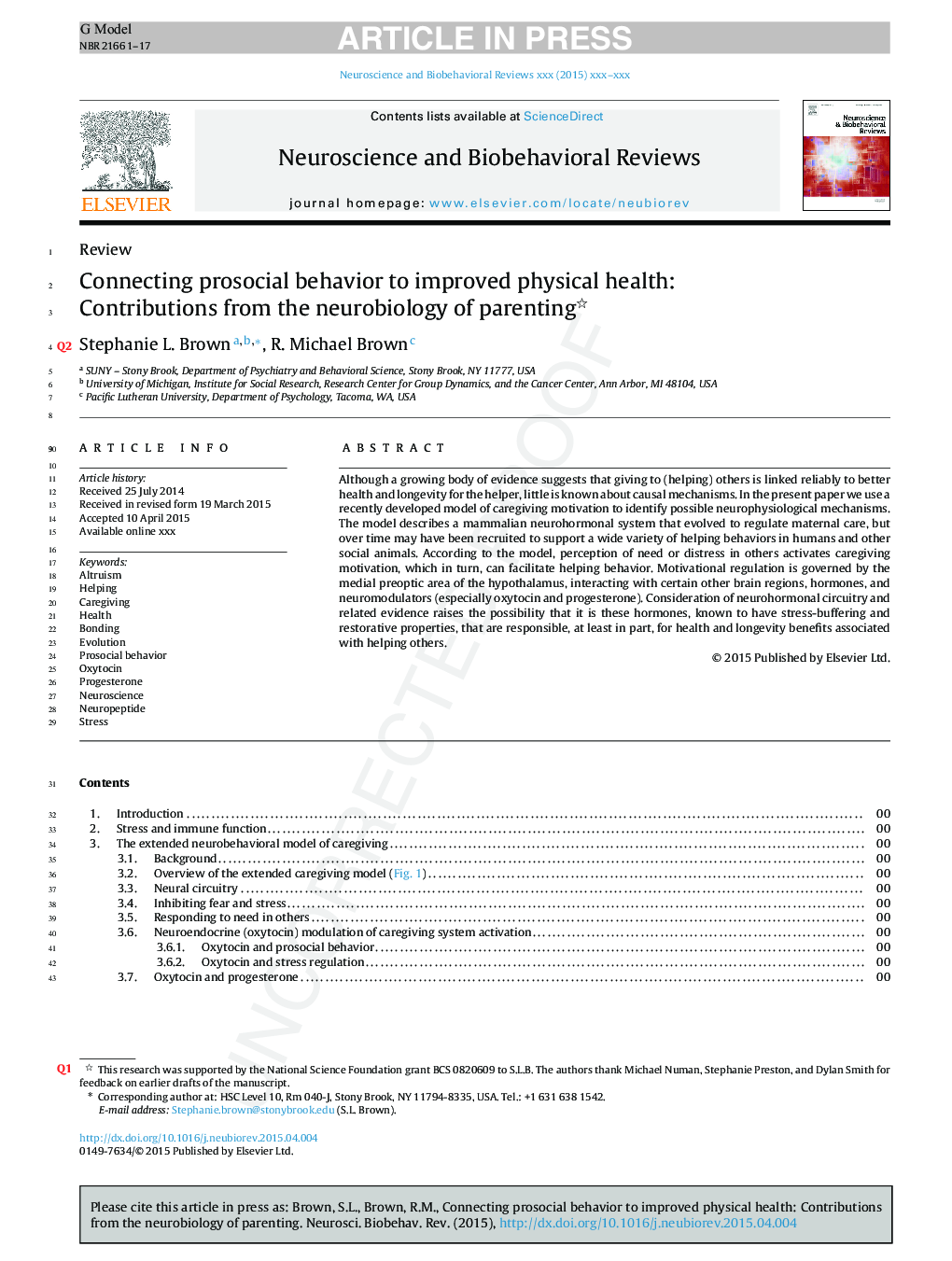| Article ID | Journal | Published Year | Pages | File Type |
|---|---|---|---|---|
| 7303289 | Neuroscience & Biobehavioral Reviews | 2015 | 17 Pages |
Abstract
Although a growing body of evidence suggests that giving to (helping) others is linked reliably to better health and longevity for the helper, little is known about causal mechanisms. In the present paper we use a recently developed model of caregiving motivation to identify possible neurophysiological mechanisms. The model describes a mammalian neurohormonal system that evolved to regulate maternal care, but over time may have been recruited to support a wide variety of helping behaviors in humans and other social animals. According to the model, perception of need or distress in others activates caregiving motivation, which in turn, can facilitate helping behavior. Motivational regulation is governed by the medial preoptic area of the hypothalamus, interacting with certain other brain regions, hormones, and neuromodulators (especially oxytocin and progesterone). Consideration of neurohormonal circuitry and related evidence raises the possibility that it is these hormones, known to have stress-buffering and restorative properties, that are responsible, at least in part, for health and longevity benefits associated with helping others.
Keywords
Related Topics
Life Sciences
Neuroscience
Behavioral Neuroscience
Authors
Stephanie L. Brown, R. Michael Brown,
